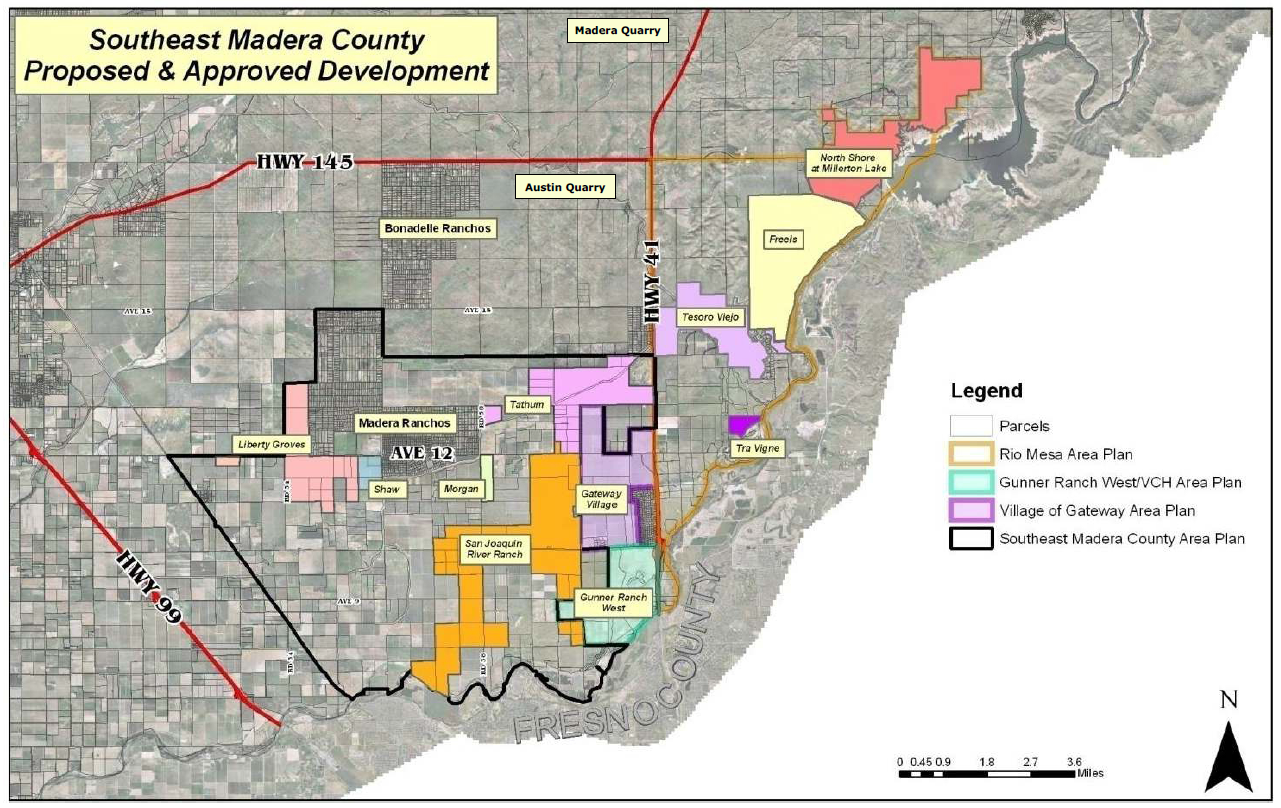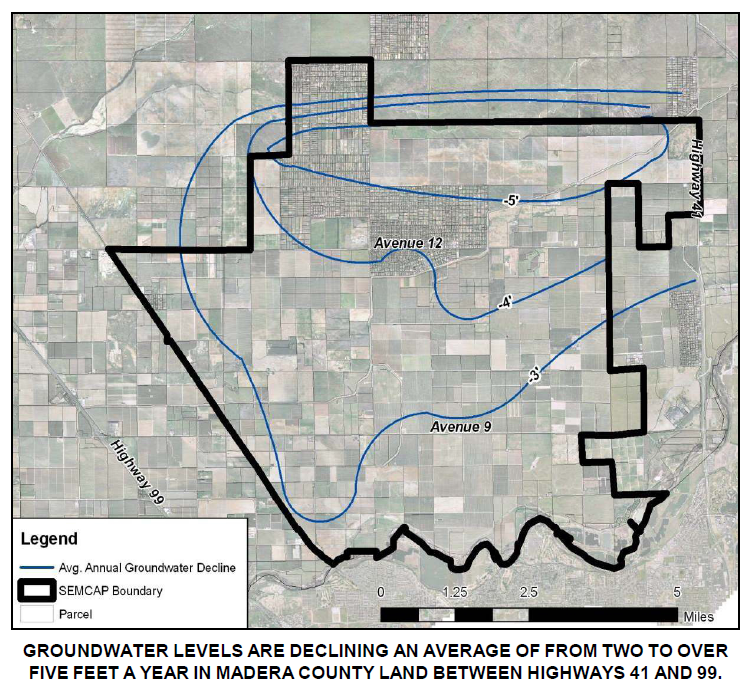Is Madera County Growing Too Fast?
by Bruce Gray [This article first appeared in the April-July 2013 issue of Tehipite Topics] posted on March 13, 2015
Land development comes at a cost to all area residents — whether the cost is in the form of taxes, the loss of open space, traffic congestion, or air pollution. If planned properly, positive impacts should outweigh the negative so that development will sustain the community and improve people’s living standards (i.e., incomes, consumption, levels of food) and quality of life (i.e., higher education, medical care, and elderly services).
We all need to get involved by looking at the big picture. We must hold our cities, counties, and developers accountable. Planning is essential and cannot be ignored. Traffic and utility infrastructure, along with protection for resources such as air and water, must be in place before a project breaks ground. Madera County has a track record of deferring mitigations until after a development project has progressed too far, and then the County falls back upon others to sort it out, often deferring the costs to the residents.
If Madera County’s new homes create a bedroom community for Fresno, all existing roadways and services will quickly become inadequate, forcing Fresno to remedy the situation, a cost which Fresno County residents will ultimately pay. In Madera County, there are ten major developments currently on the books for the southeastern portion of the County. Four of these developments have been approved by the Madera County Board of Supervisors for a total of 15,693 dwelling units plus planned commercial. These will be built once it’s been determined to be economically viable. The projects now ready are; Tesoro Viejo, North Shore at Millerton Lake, Gateway Village, and Gunner Ranch West. Another six projects with a potential of 40,623 houses plus planned commercial are in process. The approved and proposed developments are shown on the map at the end of this article.
These developments have not been without their problems
Gateway Village started out in 2006 and then ran into issues with traffic and water. After losing at the Appeals Court to the Madera Oversight Coalition (a local nonprofit citizens’ organization), there was a negotiated settlement which allowed the developers to obtain approval for their project. The property and approvals were later sold, and the new project owners are now resubmitting plans for the Gateway Village development to the County. The North Shore Millerton Lake project was also held up by the Madera Oversight Coalition due to traffic and water issues. The lawsuit was settled out of court through mitigation requiring a second look at these two concerns prior to Phase II of construction.
Tesoro Viejo is another development that lost to the Madera Oversight Coalition at the Appeals Court on traffic and water issues. They recently submitted a Revised EIR, which is now being challenged on traffic, water, air, and cumulative impacts by the Madera Oversight Coalition, Caltrans, the Coalition for Clean Air, and the City of Fresno.
The Gunner Ranch West project was approved by the Madera County Planning Commission and the proposal will be heard at the Board of Supervisors in the near future. Currently it looks as though they have seen the handwriting on the wall and have addressed the issues that others did not or would not address. The primary drawbacks to developing in the southeastern portion of Madera County include:
- A historical lack of water in the southeastern portion of Madera County. The continual reliance on groundwater for residential and commercial developments, as well as agriculture, has led to a severe average annual groundwater decline ranging from three to five feet per year. Currently there is a 22,000 acre feet per year overdraft. Gateway Village is the only project that will be importing its water under contract. See the map with groundwater contours, below.
- The County is currently underfunded and not able to financially support construction of the transportation corridors required to move the increased amount of traffic resulting from the 56,000+ proposed residential units and the accompanying commercial development. In 1997 Senate Bill 45 mandated that the State Transportation Improvement Program funding be inverted so Caltrans would receive 25% of the available funds, with the remaining 75% going to the counties. State Highway routes 41 and 145 are not considered interregional and thus are not supported by Caltrans funding.
In summary, Madera County is growing at an unprecedented rate without adequate transportation and other infrastructure, and without a sustainable water supply. This has triggered multiple lawsuits resulting in additional mitigations for the contested projects, as well as deferred actions. As to whether the development of commuter communities will occur as “smart growth” is up to each of us. Please support the Madera Oversight Coalition, the Coalition for Clean Air, and area decision-makers with your financial and political support.

